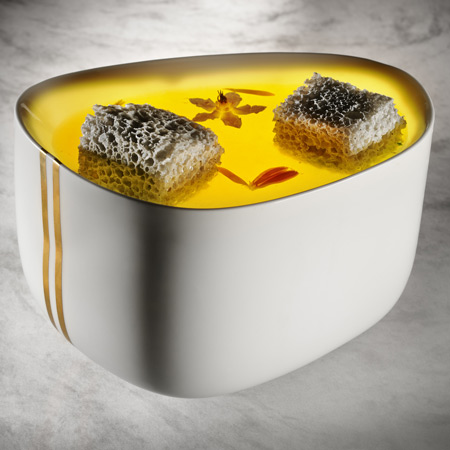
Multi-sensorial Gastronomy by Philips Design
Philips Design in Eindhoven have collaborated with Spanish restaurant Arzak to create a conceptual series of tableware that glows when food is placed on it.
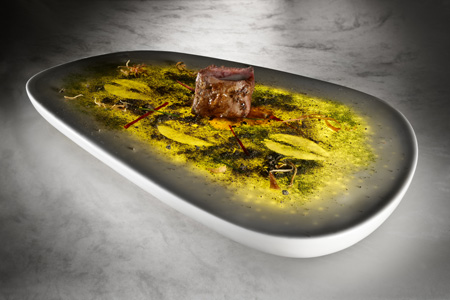
Called Multi-sensorial Gastronomy, the designs are part of the ongoing Philips Design Food Probe project, which investigates how we might experience food in the future.
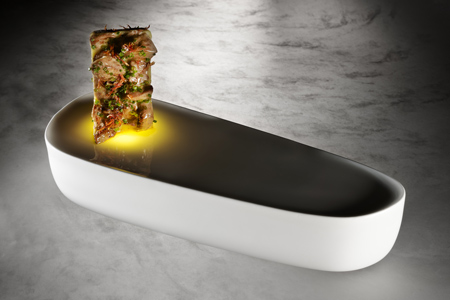
This range includes a bowl, plate and serving plate that emit fragrances, vibrations and light in response to the presence of food on their surfaces.
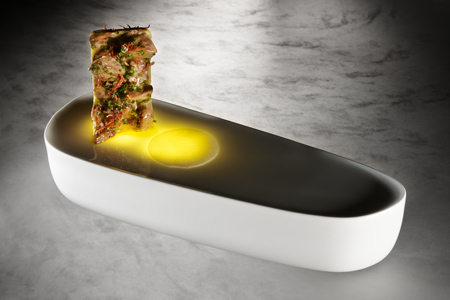
See also: A machine that prints food by Philips Design (September 2009)
Here's some more information from Philips Design:
--
The latest Probe: Multi-sensorial gastronomy
The ‘Multi-sensorial Gastronomy’ concepts are the latest project in the Food Probe. Lunar Eclipse (bowl), Fama (long plate) and Tapa de Luz (serving plate) are made from bone china and familiar objects from our everyday lives. However when liquid is poured into the bowl or food is placed on the plates, they begin to shine. A glowing light subtly appears from the bottom of the bowl and plates creating a new sensory dining experience as the senses are stimulated and altered. The series uses bone china and involves the integration of lighting, conductive printing, selective fragrance discharge, micro-vibration, electro stimulus and a host of other sensory stimuli that affect the food and the diner in subtle ways. The Multi-sensorial gastronomy Probe project sets out to explore ways in which sensory experience can be altered dynamically during a meal. The bowl, serving plate and the long plate have been developed with Arzak.
Engaging the senses
Famous Spanish restaurant Arzak and Philips Design have agreed to explore the multi-sensorial possibilities of gastronomy by developing provocations that involve the material integration of electronics, light and other stimuli to enhance the experience of eating. The prototypes and concepts produced in the context of this collaboration do not represent a commercial agreement between Arzak, Philips and Philips Design. The ideas are a collaborative exploration of concepts intended to provoke discussion and debate in the world of food and technology futures.
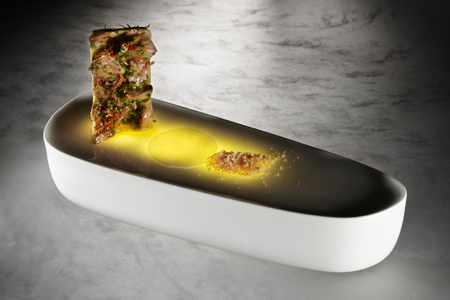
The bone china series
When liquid is poured into the bowl, a glow subtly appears from the bottom of the bowl which in turn fades while you are eating and returns when the bowl is placed on the table. A similar effect can be seen with the plates. Light starts to glow as soon as food is placed on the plates.
Design Probes and Arzak
Arzaks’ team created three special dishes to accompany the plates, complimenting the design concept of the objects:
- Pomez stone - the only stone that floats
- Totem and taboo of foie
- After the footsteps of the roe deer
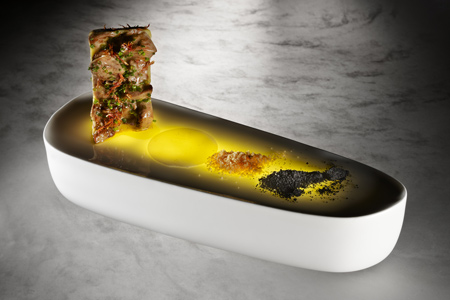
Philips Design Probes, where it all begins
The Philips Design Probe program was established to explore far future lifestyle scenarios based on rigorous research in a wide range of areas. Probes projects are often carried out in collaboration with experts and thought leaders in different fields, culminating in a "provocation" designed to spark discussion and debate around new ideas and lifestyle concepts. Previous Probe provocations include 'Electronic Tattoo', 'emotional sensing dresses', 'future sustainable urban habitats' and the Food Probe covering ‘Diagnostic Kitchen’, ‘Food Creation’ and ‘Home Farming’.
The future is about sensitive technology
A car belt knowing what to do in a car crash, a dress that feels and fits your mood and plates that play music to accompany the food you are enjoying. It might sound like the ingredients for the latest movie of Star Wars, but you wouldn’t be further from the truth. These are just a few examples of the possibilities multi-sensorial solutions in which electro-stimulus and many other sensory stimuli can be applied in day-to-day objects to react to and affect or enhance your mood.